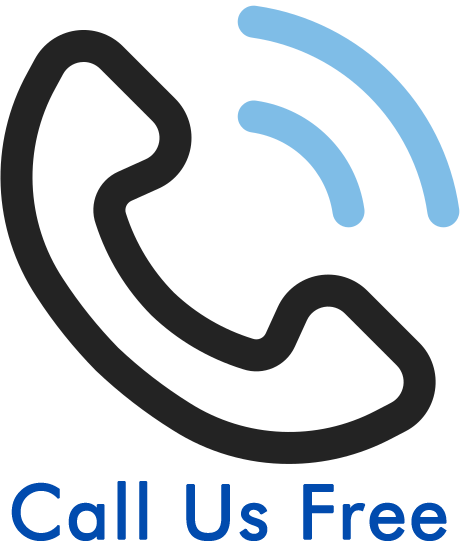This guide will discuss when public liability claim payouts could be awarded for injuries from public accidents.
If you are hurt in a public place because the occupier did not meet the duty of care they owed you, you may have grounds to claim personal injury compensation. Before reviewing the occupier’s duty of care and the legislation outlining their responsibilities, we will first look at compensation which can be awarded in a public liability claim.
Going through the guide, you will read more about different public accidents that can occur, as well as guidance on how to gather evidence supporting a claim. Finally, we will explain the perks of legal representation by a No Win No Fee solicitor from our panel.
You could speak to our advisors today for a free consultation and assessment. The team is easy to reach, as you can:
- Call 0161 696 9685
- Contact us online with your query
- Speak to us on the below live chat feature.
Select A Section
- Examples Of Public Liability Claim Payouts
- Who Could Make A Public Liability Claim?
- What Are Public Place Accidents?
- How To Prove A Public Liability Claim
- Understanding No Win No Fee Claims
- Learn More About Public Liability Claim Payouts
Examples Of Public Liability Claim Payouts
You will be awarded general damages if you are successful in a personal injury claim. This head of claim will compensate you for the pain and suffering your injuries have caused you and any mental illness that has resulted from the accident or injury.
The Judicial College Guidelines (JCG) is a document that legal experts use alongside medical evidence to value injuries. As an illustration, we have put together the below table using JCG compensation brackets.
When assigning values to injuries in public liability claim payouts, very often, the JCG will be used as a guide. With that in mind, we do not recommend taking the figures as a guarantee of what you will receive.
Compensation table
| INJURY | SEVERITY | COMPENSATION | NOTES |
|---|---|---|---|
| Hand | Amputation of Index and Middle and/or Ring Fingers | £61,910 to £90,750 | The hand will be considered essentially useless, and entirely or mostly unable to grip. |
| Eye | Total Loss Of One Eye | £54,830 to £65,710 | The cosmetic impact, plus the age and psychiatric reaction of the injured person, decide the level of award. |
| Arm | Injuries Resulting in Permanent and Substantial Disablement | £39,170 to £59,860 | Significant and permanent disability, either functional or cosmetic, following serious forearm fractures. |
| Arm | Simple Fractures of the Forearm | £6,610 to £19,200 | The injury is simple, in that there are not significant resultant disabilities. |
| Leg | Severe (iii) | £39,200 to £54,830 | Serious fractures, or injuries to the ligaments or joints. Factors under consideration include extensive scarring and a high likelihood of arthritis. |
| Leg | Severe (iv) | £27,760 to £39,200 | The bracket covers severe crushing injuries to a limb, as well as complicated or multiple fractures. |
| Head | Less Severe | £15,320 to £43,060 | The injured person will make a good recovery and return to a normal social and working life. However, they may suffer persistent issues like poor memory or concentration. |
| Pelvis and Hips | Moderate (i) | £26,590 to £39,170 | The injury is significant but any permanent disability is not major. |
| Wrist | Recovery in more than 12 months | £6,080 to £10,350 | Where a fracture or soft tissue injury occurs, but is largely healed with the exception of minor symptoms. |
Further Factors Affecting Public Liability Claim Payouts
There is a second head of claim, referred to as special damages. While general damages will always feature in a personal injury settlement, special damages are not assured.
Special damages in public liability claim payouts will reimburse the claimant for financial losses that have been incurred as a consequence of their injuries. You will need to present evidence like receipts, payslips or invoices to show that your injuries have caused a monetary loss.
Special damages may include:
- Travel costs, including any alternative travel you have to take because you cannot drive or walk.
- Necessary medical and care expenses; for example, if your pain means you cannot care for yourself. This also extends to being out of pocket for medicine you have been prescribed.
- A loss of earnings if the injuries cause you to miss work.
- Mobility equipment if the injuries are serious enough for you to need mobility support at home or on the move.
Who Could Make A Public Liability Claim?
To proceed with a personal injury claim after a public accident, you must show that an occupier of a public space:
- Owed a duty of care to you.
- Breached their duty of care.
- Caused an accident through this breach, leading to your injuries.
The occupier’s duty of care is laid out by the Occupier’s Liability Act 1957. Section 2 of the Act states that occupiers must take steps to ensure the reasonable safety of all visitors on the premises.
An occupier needs to perform safety procedures such as a risk assessment or acting to remove or signpost hazards, otherwise, they could be in breach of their duty of care. This, in turn, could result in an accident and a subsequent injury.
Limitation Periods
The Limitation Act 1980 outlines a three-year limit for a personal injury claim to begin, starting from the accident date. However, there can be exceptions in some cases.
If you are unsure about time limits or have any other questions about public liability claim payouts, please don’t hesitate to contact us through the above phone number.
What Are Public Place Accidents?
For claimants to receive public liability claim payouts, they must have a valid and successful public liability claim. Below you will find examples of how accidents could occur in public places:
- You could suffer injuries from a slip, trip or fall due to the fact no warning signs were used. For instance, a slip on a wet floor could bring about a broken wrist or hip.
- Likewise, you may sustain a broken or fractured bone by falling because of a pothole, cracked pavement or defective stairs.
- A serious crush injury could be inflicted if your hand or finger was trapped in a malfunctioning automatic door. Moreover, a crush could even lead to a surgical amputation.
- You could get a head injury through an accident in a shop, where loose items are not safely stacked and fall onto you.
- In a public park, you could suffer injuries from a broken park bench or defective play area equipment.
Please get in touch with our advisors to see if you are eligible to make a personal injury claim.
How To Prove A Public Liability Claim
Before even considering public liability claim payouts, it is necessary to have evidence to support your case. This is because evidence can directly link an occupier’s breach of duty to your injuries. Proof that could help your claim might come in the form of:
- Medical records like scans or X-rays which cast light on the injuries suffered.
- A diary of your treatment and symptoms can also be illustrative when showing the extent of injuries.
- CCTV footage showing the accident, as well as its cause.
- Photographs that, along with the footage mentioned above, highlight the immediate scene of the accident. Visible injuries can also be documented.
- Contact details of witnesses who can give their testimony.
If you seek legal support, your public liability solicitor will likely be able to help in the evidence-gathering.
With this in mind, please chat with our advisors if you would like to know more about how a solicitor from our panel could help you find proof for your personal injury claim.
Understanding No Win No Fee Claims
A solicitor from our panel could help you put together your case and assist throughout the whole process, provided that you have a valid claim.
A solicitor from our panel may offer you a type of No Win No Fee contract called a Conditional Fee Agreement (CFA). Under a CFA, your solicitor would take a percentage of your compensation if your case is successful. The percentage is legally capped by the Conditional Fee Agreements Order 2013.
There is no fee for the solicitor’s services if a claim fails.
Talk To Our Team
If you have more questions about public liability claim payouts and how a personal injury solicitor can help, you can chat with our advisors whenever suits you. The team can offer a free case assessment for you. Furthermore, you could be given the option to speak with a solicitor from our panel if your claim has valid grounds.
There are no obligations, so for all of your queries and needs, speak to us today by:
- Using our e-form to contact us
- Calling 0161 696 9685
- Selecting the live chat option below.
Learn More About Public Liability Claim Payouts
We have even more guides which could help you, such as the ones below:
- A guide on making claims against a local council.
- Information on claiming for an accident on public transport.
- If you have been injured while working in a public space, you can learn more about making an accident at work claim here.
- If you tripped on a rug in public because another party breached their duty of care, then you may have valid grounds to claim compensation.
- Learn about claiming for a trampoline accident with our helpful guide.
For some handy resources:
- NHS – A-Z of medical conditions.
- Health and Safety Executive (HSE) guidance on preventing slips and trips.
- GOV – how to report a pothole.
Thank you for reading our guide to public liability claim payouts.


